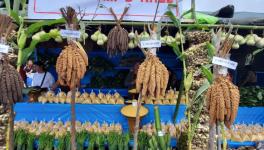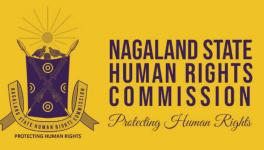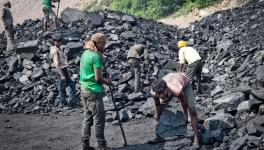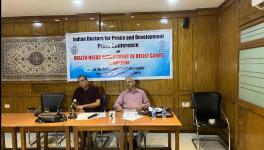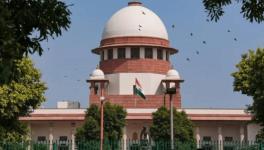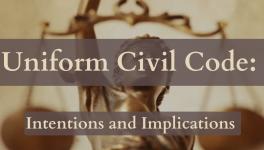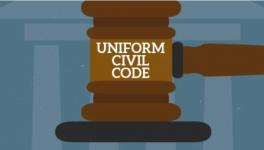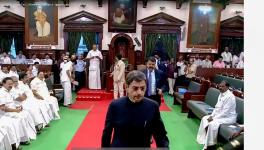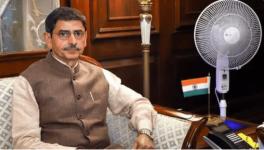Naga Organisations Give RN Ravi a Cold Shoulder
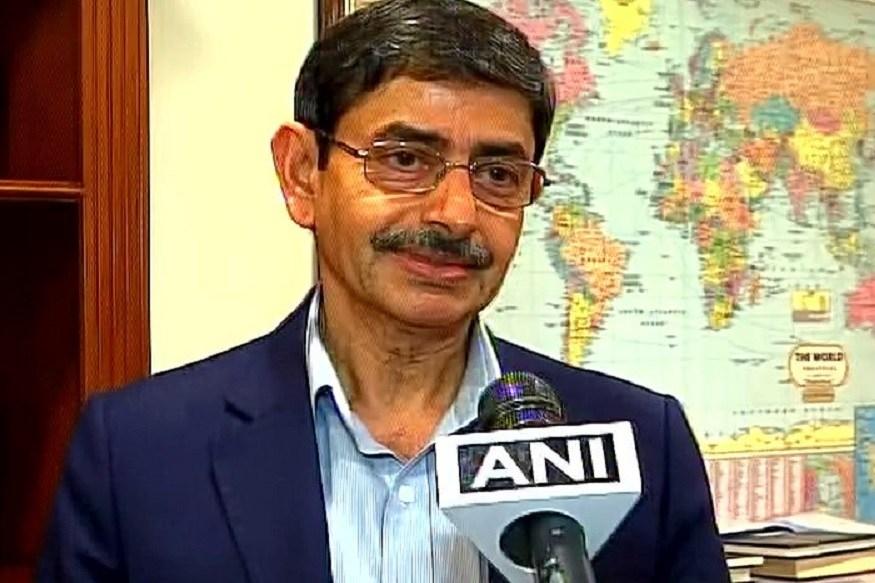
Image Coutesy: Tangkhul Online
With another election around the corner, patience seems to be running thin among Naga civil society groups. During the assembly elections in early 2018, the slogan of ‘solution before election’ proved to be hollow. At present, before any similar demands are raised, the Bharatiya Janata Party (BJP) is talking about ‘election for solution’. Former Intelligence Bureau (IB) spook and interlocutor for the Indo Naga talks, RN Ravi was to meet various Naga civil society organisations over February 26 and 27. However, the groups involved were visibly disinterested.
On February 19, BJP leader Dr. Sanjay M Ram Paswan visited Kohima to interact with the state BJP unit on the party’s election manifesto. In the course of questions fielded by the press, he divulged the party’s slogan of ‘election for solution’. He further stated that the prime minister was treating the Indo-Naga talks on a priority basis and that foreigners are more interested in the Indo-Naga issue. Ironically, when Narendra Modi contested the Lok Sabha polls in 2014, he had promised that he would find a solution within 18 months. When a question on this promise was raised, Paswan deflected by saying that the prime minister was working for 18 hours a day.
Also Read | Konyak Led Faction of NSCN(K) to Join Indo-Naga Talks
Naga Framework Agreement
On August 3, 2015, a framework agreement was signed between the government of India and the National Socialist Council of Nagaland (Isak Muivah) (NSCN[IM]). On November 17, 2017, a second agreement was signed with the Working Committee (WC) of Naga National Political Groups (NNPGs). On January 19, 2019, following a split in the NSCN (Khaplang), the Khango Konyak faction joined as a part of the WC of NNPGs. Till date, the contents of either agreement have not been placed in the public domain. What is, however, clear are the demands of the initial two parties, i.e. the government of India and the NSCN(IM).
The NSCN(IM), though high on rhetoric, has accepted that sovereignty is not on the table and in exchange, seems to have opted for ‘shared sovereignty’. Another sticking point was the integration of Naga inhabited areas. Due to the past fluidity of borders in the Northeast, Nagas inhabit not only present-day Nagaland, but parts of Arunachal Pradesh, Assam and Manipur. Integration, however, was not acceptable to any of the people of the three states. Hence, one solution that appeared was to extend the application of Article 371A (special provisions for Nagaland) of the Constitution to the Naga inhabited areas in these states. This, too, was vehemently opposed by the people of Assam and Manipur, in particular. Finally, what seems to have been worked out between the NSCN(IM) and the government of India is the creation of a pan Naga cultural body which does not have a geographically defined jurisdiction.
Also Read | Manipur Witnesses One of it’s Largest Rallies for Protection of Territorial Integrity
The 213th Report of the Parliamentary Standing Committee on Home Affairs, on the ‘Security Situation in the North Eastern States of India’ has shed some light on the status of the talks. What RN Ravi had told the committee was that the boundaries of the neighbouring states would not be touched. The committee had recommended that the governments of the neighbouring states would have to be kept abreast of the developments. The solution must be arrived at quickly to ensure that unending talks do not degenerate into renewed disaffection. The final recommendation was to ensure that the rehabilitation packages for the fighters are substantial enough to keep another insurgency from brewing.
‘Election for Solution’
News of Ravi’s trip to Nagaland to brief legislators and civil society groups on the progress of talks was announced on February 20, a day after Paswan’s comments about ‘election for solution’. Naga Hoho president, Chuba Ozukum was quoted in The New Indian Express on February 20 as saying that there is no hope for a positive outcome and that Ravi’s visit is meaningless. A day before the meetings were to be held, the Naga Mothers’ Association (NMA) decided to boycott the meeting. The NMA’s boycott was a mark of protest against the government of India’s insincerity and its failure to resolve the Naga political issue and bring peace. The Nagaland Post reported that the NMA said that it would send a memorandum citing their reasons for the boycott. The next day, the Naga Hoho and the Naga Students Federation also announced their decision to boycott the meeting citing the same reasons.
Also Read | Nothing to Show: Three Years of the Framework Agreement
On February 25, a press conference was organised by the Naga Students’ Union Delhi (NSUD) at the press club. The idea was to bring global attention to the Indo-Naga issue and reiterate their demand for an immediate solution to the Naga political issue that will be honourable and acceptable to the Naga people.
The strategy this time seems to be different from what was attempted during the assembly elections early last year. It began in December 2017, when the Nagaland Legislators Forum passed a resolution to defer the assembly elections until a final agreement is signed between the Indian government and the Naga national organisations. In January the following year, representatives from 11 political parties met with the Core Committee of Nagaland Tribal Hohos (CCNTH) and signed an agreement not to file nomination papers. However, the union government did not consider the demands of the Naga civil society. Despite a shutdown in February, the message was clear, those who do not file their nominations will lose, the elections will happen whatever the cost.
Finally, all the signatories of the January agreement reneged on their promise. The elections took place and a coalition government led by Neiphiu Rio’s newly floated Nationalist Democratic Progressive Party (NDPP) formed a coalition government with the BJP.
Also Read | Indo-Naga Talks: The Difficult Road to Peace
Considering the actions of the civil society organisations, one can perceive fatigue. There seems to be a sense that further assurances of reaching a solution be damned, either present one or any other. The Indo-Naga conflict has lasted almost seventy years. Of which, only the last twenty years – since the ceasefire agreements were signed – have been relatively calm. It is uncertain whether there will be a solution after the upcoming Lok Sabha elections or the following three elections. Be that as it may, one may not be wrong to presume that the Indian state is playing a game of attrition. It is yet to be seen whether the next generation of Naga leadership are preparing to receive the baton.
Get the latest reports & analysis with people's perspective on Protests, movements & deep analytical videos, discussions of the current affairs in your Telegram app. Subscribe to NewsClick's Telegram channel & get Real-Time updates on stories, as they get published on our website.









